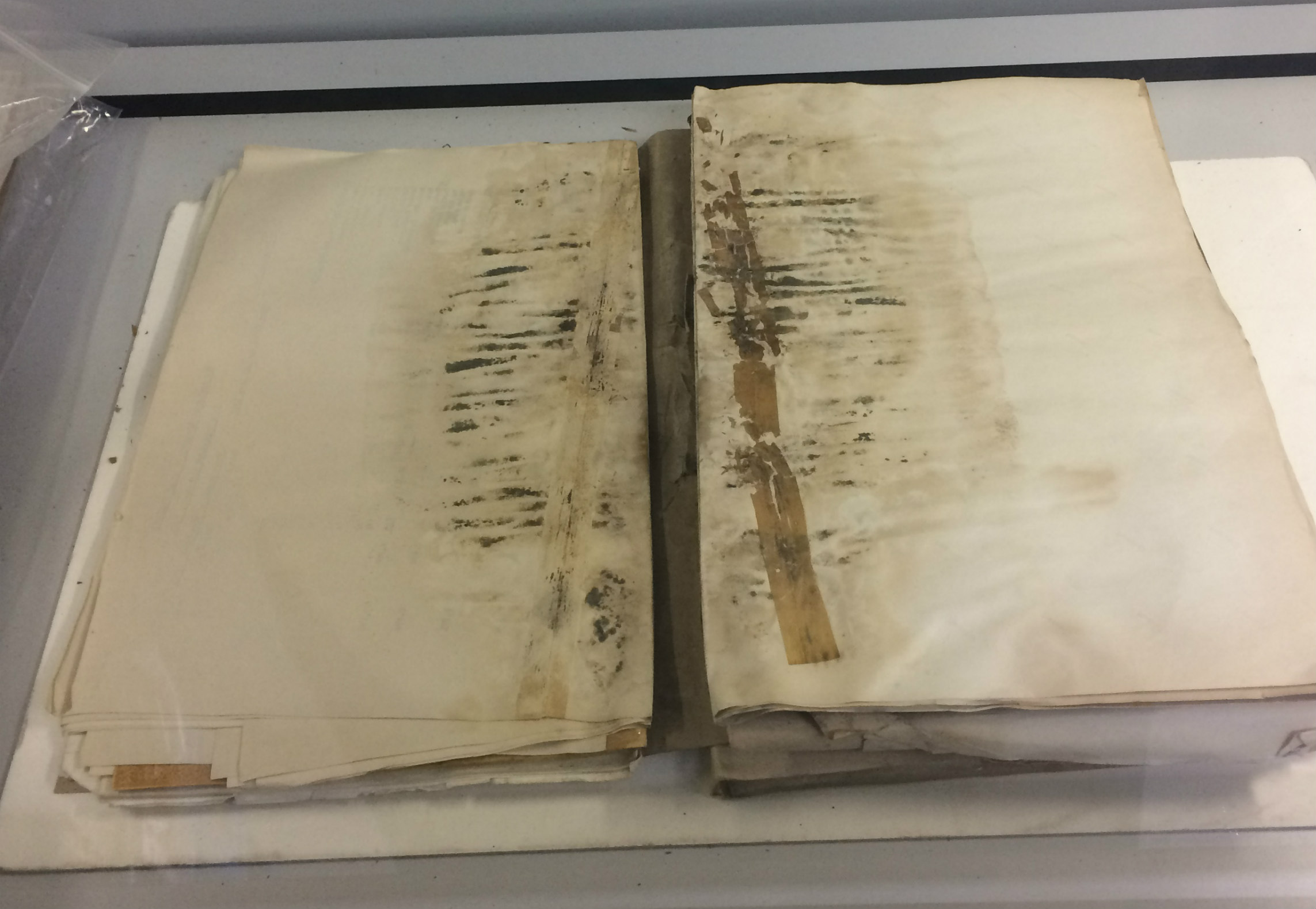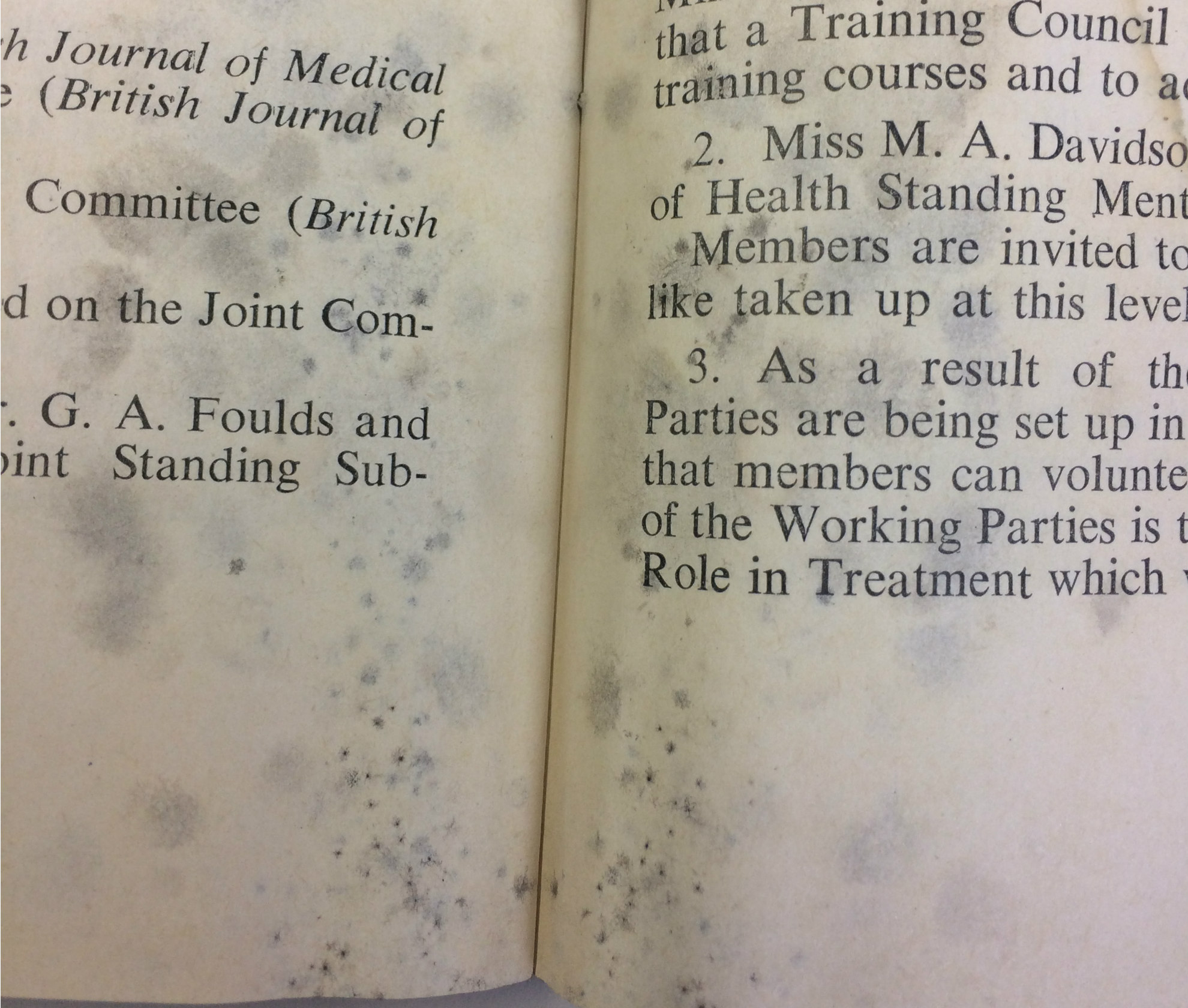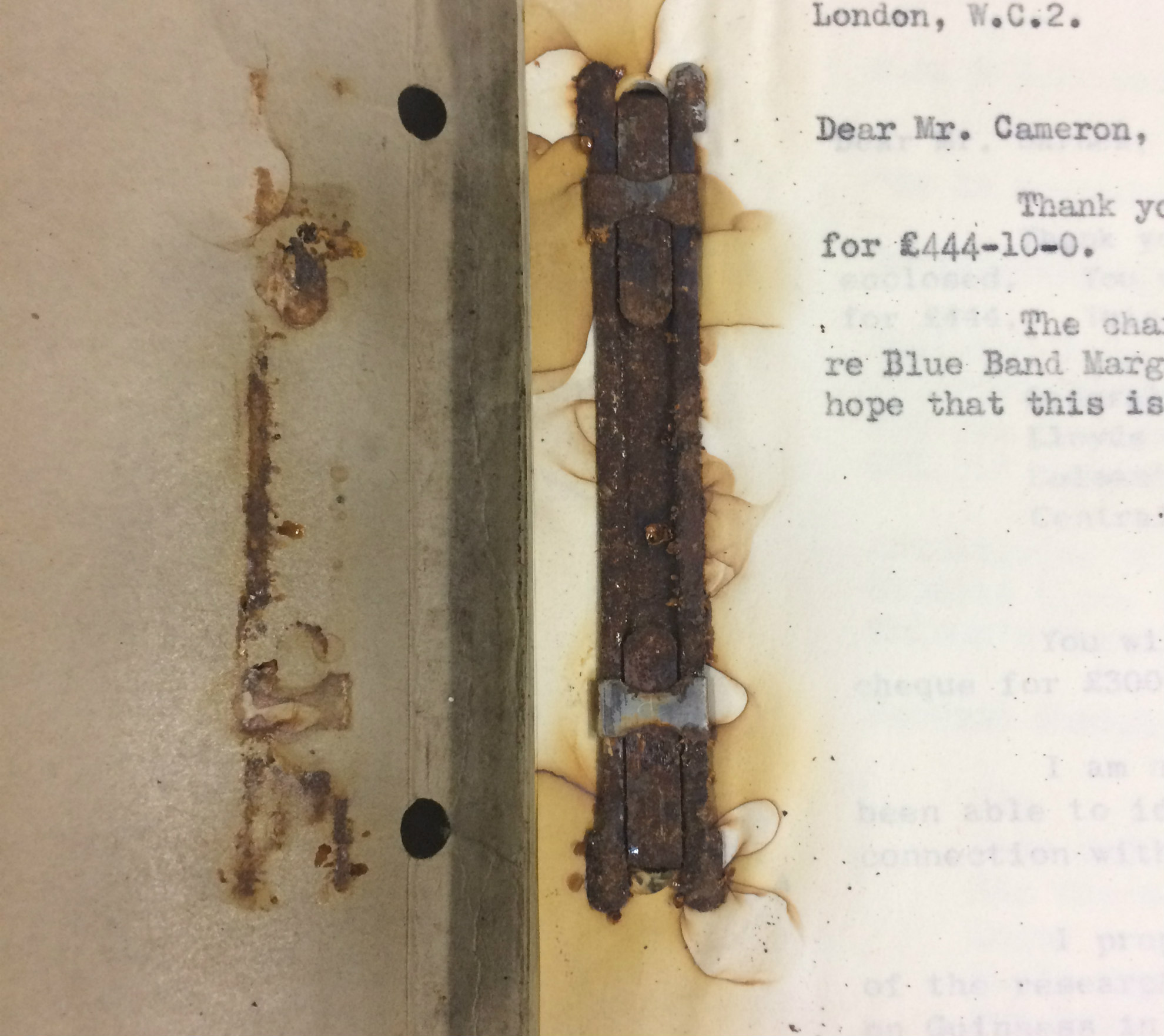When the boxes from the archive were opened and the material was explored for cataloguing Elena Carter, with a worried look, told the Archive Project Group that one box contained mould and the item would therefore need to be treated/cleaned by Wellcome Trust’s Conservation team. Luckily the mould was limited and no major damage was done. I understand that the enemies of archives, and libraries, are fire, flood and man-made catastrophes (historical and fictional accounts of the destruction of major libraries and archives e.g. in Alexandria and in The Name of the Rose, to name few, are evidence of this kind of events). Destruction of books, manuscripts and any other artefact that are preserved for future generation is putting the clock back for those generations. It is preventing them to access the knowledge, the experience and the expertise achieved by previous generations.

Mould growth is encouraged by dark or damp conditions and a lack of air movement. In this case, mould was already present on the items before transfer to Wellcome Trust – the stacks space where archives are stored in the library is designed to high preservation standards and effective environmental control to minimise the risk.
Micro-organism like fungi can have a devastating effect and mould in libraries and archives can be the result of design, construction, retrofit, alterations and poor maintenance of the buildings. In other words the physical context where the material is located can generate mould and destroy whatever human efforts are trying to preserve. I started to think that this could be the worst nightmare for an archivist as well as researchers and historians.

Since that news I found myself thinking of an obscure fight taking place behind the scene between mould and dust. Who is going to take control of the material of an unattended archive? For obvious reasons I found myself sympathising and hoping that dust will win the day.
Mould is a binary substance. It can be destructive or, in small cases, curative (e.g. penicillin). It attacks and corrodes the material it grows on. It can spread as an infectious disease and feed on the material (and the memory). Dust is more of a symbiotic guest of the material. It seems to embrace it in a holistic manner taking it away from sight but not destroying it. Mould requires a cure and will put material in a quarantine whilst dust can be blown away. Mould can destroy memory whilst dust just hides it.

I am reminded of a quote from Dewey’s Democracy and Education: An Introduction to the Philosophy of Education –
“If a plague carried off the members of a society all at once, it is obvious that the group would be permanently done for. Yet the death of each of its constituent members is as certain as if an epidemic took them all at once. But the graded difference in age, the fact that some are born as some die, makes possible through transmission of ideas and practices the constant reweaving of the social fabric. Yet this renewal is not automatic. Unless pains are taken to see that genuine and thorough transmission takes place, the most civilized group will relapse into barbarism and then into savagery.”
The destruction of a library or an archive is equivalent to a plague for a social group. Memory will be erased once and for all.
Luckily Elena assured us that that was the only box with mould. The rest only had dust.
PS
I am reminded from our colleagues at the Wellcome Trust that:
• mould is everywhere – and it starts growing under condition that are right for it, usually damp, not too cold, and left alone (not moved often)
• dust contains a lot of mould spores, so if a dusty, dirty archive is then stored damp, the likelihood for it to grow mould will probably be higher as there will be more spores on the surface to grow.
• Paper, leather, glue (e.g. starch based or protein based) are an ideal substrate for mould, and mould ‘eats’ /digests the material which is why paper that is affected by gets very soft and degraded.
• Certain mould can pose a health risk to humans, although the ones usually found on paper/archives are not toxic. They can still cause allergic reactions in some people though.
So- dust and mould don’t fight against each other, really. It’s us who fights against mould by providing the right storage environment, and us fighting against dust, again by providing the right storage environment.